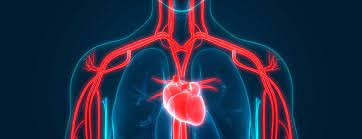Definition
Vitamin E is a lipid-soluble vitamin that is present in a variety of foods and beverages. Vitamin E protects cells from free radical damage as an antioxidant, as free radicals are produced when the body converts food into energy.
Environmental sources of free radicals include cigarette smoke, air pollution, and ultraviolet radiation from the sun. The body requires vitamin E to strengthen the immune system, enabling it to fight against bacterial and viral infections. Vitamin E can also protect blood vessels from the formation of blood clotting.
There are eight different kinds of vitamin E. These are alpha, beta, gamma, delta, and tocotrienol (alpha, beta, gamma, and delta). Alpha-tocopherol is the form of vitamin E that people need. All forms of vitamin E may enter the digestive system, but the liver only processes alpha-tocopherol. The liver eliminates and excretes any other remaining vitamin E. A diet lacking enough vitamin E is the leading cause of vitamin E deficiency, a very uncommon condition.
Causes
Familial predisposition can lead to vitamin E deficiency. Let your doctor know if you have a family history of vitamin E deficiency, inherited disorders like congenital alpha-beta lipoproteinemia, or severe vitamin E deficiency.
Fat is required for effective vitamin E absorption. Deficiency in vitamin E may result from various medical conditions that inhibit the absorption of lipids, such as chronic pancreatitis, celiac disease, liver disorders, and cystic fibrosis.
If you want to know more about pancreatitis, you can read it here: Pancreatitis - Definition, Cause, Symptom, And Treatment
Risk factor
Various factors might lead to inadequate absorption of fat in your body, which includes fat-soluble nutrients such as vitamin E. Chronic pancreatitis, cholestasis, cystic fibrosis, hepatic cirrhosis, Crohn's disease, and short-bowel syndrome are several conditions that can lead to vitamin E deficiency.
In some cases, an ataxic hereditary disease is the cause of vitamin E deficiency. Ataxia plays a role in the development of vitamin E deficiency. As premature babies have a lower body fat percentage, their digestive tracts are not fully developed and cause problems absorbing fat and vitamin E. Vitamin E deficiency is frequent in preterm, low-weight, and low-fat newborns.
Read more: Hepatitis Sirosis - Definition, Cause, Symptom, And Treatment
Symptoms
Vitamin E deficiency can lead to neuropathy and myopathy, resulting in the manifestation of the following symptoms:
- Peripheral paresthesia in upper and lower extremities
- Impaired motor coordination
- Impaired muscle strength
- Visual impairments
- Immunodeficiency
Muscle weakness, slower reflexes, difficulty walking, loss of coordination, and disorientation (inability to determine the location of the limbs and legs without visual inspection) are all possible symptoms in children.
Diagnosis
The doctor can identify vitamin E deficiency through anamnesis, physical examination, and additional tests.
Anamnesis
Anamnesis is an interactive session where a doctor and a patient engage in a dialogue consisting of questions and answers. The doctor will inquire about your:
- Present symptoms
- Medical history
- Medical history of the family
Physical Examinations
During the physical examination, the doctor will evaluate the patient's blood pressure, respiration rate, pulse, and body temperature.
Additional Examinations
Blood tests are essential to determine the levels of vitamin E to confirm the diagnosis.
Management
If you are diagnosed with vitamin E deficiency, the doctor will immediately administer the treatment for vitamin E deficiency. It is recommended to prioritize consuming vitamin E-rich foods as the primary therapy rather than relying on additional supplements prescribed by the doctor.
However, some individuals cannot produce vitamin E, so they must obtain it externally from other sources, through supplements or diet.
- Diet
Vitamin E is present in the following meals:
-
- Almonds, sunflower seeds, walnuts, and nut butter are all examples of nuts and seeds
- Completely unshelled seeds
- Olive oil, sunflower oil, and other vegetable oils
- Greens, peppers, and leaves (such as spinach)
- Egg
- Vitamin-enriched cereals
- Kiwi
- Mango
- Avocado
- Pumpkin
- Supplements
The consumption of supplements is a common method for supplementing one's diet with vitamins and minerals. Certain medications, including anticoagulants, antiplatelets, simvastatin, niacin, chemotherapy treatments, and radiotherapy drugs, can affect the body's ability to absorb vitamin E.
Read more: Vitamin E - How To Work, Contraindication And Drug Interaction
Complications
Vitamin E deficiency can cause complications from the interaction of several medications, such as anticoagulants and antiplatelets, which increases the risk of bleeding. Other vitamin E deficiency complications include:
- Weak muscles
The central nervous system needs vitamin E. Vitamin E is the body's primary antioxidant, and a deficiency can induce oxidative stress and muscle weakness.
- Gait impairment and lack of coordination
Vitamin E deficiency damages Purkinje neurons, leading to compromised signal transmission.
- Sensations of numbness and tingling
Damage to nerve fibers can inhibit the transmission of accurate signals, resulting in peripheral neuropathy.
- Visual impairment
Vitamin E insufficiency weakens the retinal function and eye cells' light sensitivity.
- Immunodeficiency
Several studies suggest that vitamin E deficiency inhibits the immune system.
- Hemolytic anemia
Vitamin E deficiency may damage red blood cells.
Be careful, as vitamin E supplementation for vitamin E deficiency might cause nausea, diarrhea, stomach cramps, exhaustion, weakness, headaches, visual abnormalities, redness, gonadal dysfunction, and increased urine creatinine.
Prevention
To effectively prevent vitamin E deficiency, it is essential to maintain a healthy diet rich in vitamin E. The following foods contain high levels of vitamin E:
- Almonds, sunflower seeds, nuts, and nut butter
- Vegetable oils, especially olive and sunflower
- Greens like spinach and red peppers
- Egg
- Vitamin-enriched cereals
- Kiwi
- Mango
- Avocado
- Pumpkin
When to see a doctor?
See your doctor if you experience any of the following symptoms of vitamin E deficiency. Regular checkups with your doctor are necessary to ensure adequate vitamin E intake. The doctor will prescribe the appropriate treatment for the deficiency.
Want to know more information about other diseases? Click here!
- dr. Monica Salim
Vitamin E. (2021). Retrieved 13 February 2023, from https://ods.od.nih.gov/factsheets/VitaminE-Consumer/#:
Vitamin E Deficiency. (2022). Retrieved 13 February 2023, from https://www.ncbi.nlm.nih.gov/books/NBK519051/
Vitamin E Deficiency. (2022). Retrieved 13 February 2023, from https://www.msdmanuals.com/home/disorders-of-nutrition/vitamins/vitamin-e-deficiency
What are the Symptoms of Low Vitamin E?. (2018). Retrieved 13 February 2023, from https://www.medicalnewstoday.com/articles/321800
How to Identify and Treat a Vitamin E Deficiency. (2018). Retrieved 13 February 2023, from https://www.healthline.com/health/food-nutrition/vitamin-e-deficiency
Vitamin E. (2023). Retrieved 13 February 2023, from https://www.hsph.harvard.edu/nutritionsource/vitamin-e/
Vitamin E. (2020). Retrieved 13 February 2023, from https://www.mayoclinic.org/drugs-supplements-vitamin-e/art-20364144
Vitamin E Deficiency. (2021). Retrieved 13 February 2023, from https://emedicine.medscape.com/article/126187-overview
Vitamin E (2021). Retrieved February 13, 2023, from https://medlineplus.gov/ency/article/002406.htm











